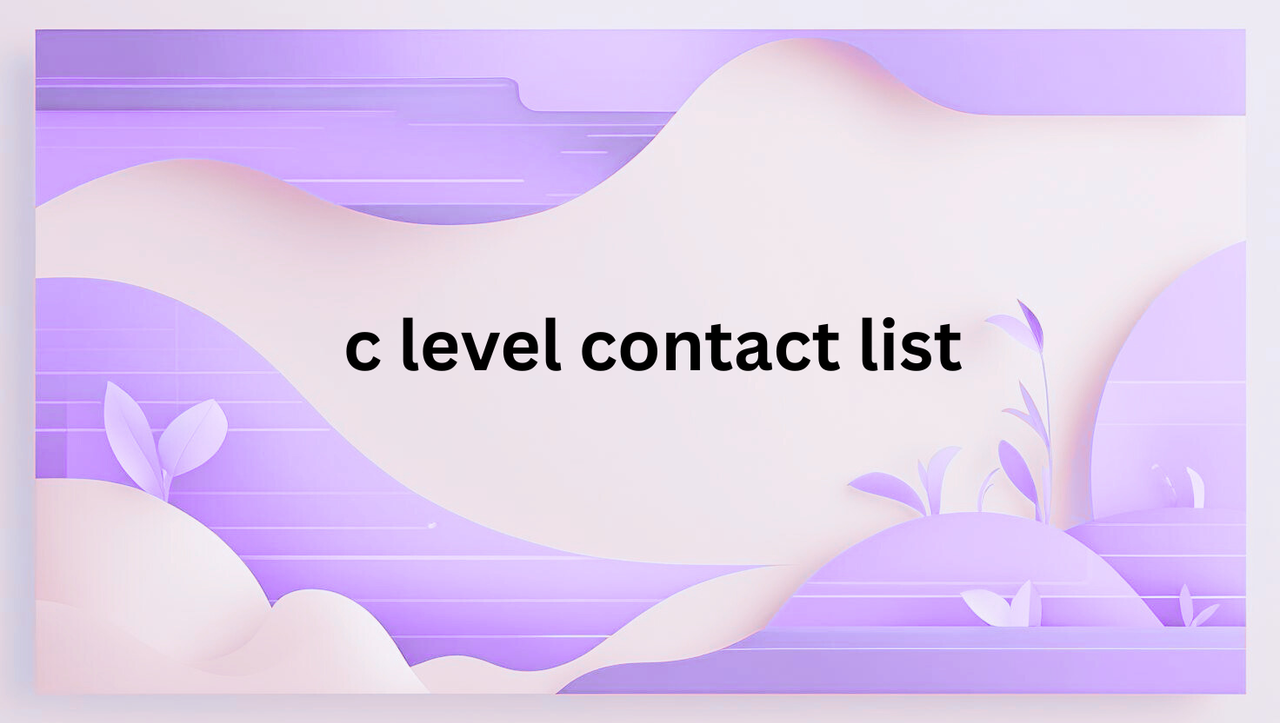The Ideal Customer Profile (ICP)
The Ideal Customer Profile (ICP) is a high-level, generalized c level contact list description of the company (in B2B) or customer segment (in B2C) that would benefit most from your offering and, crucially, provide the most value to your business in return. Think of the ICP as a foundational filter—the framework that dictates the "who" you should be targeting at the organizational or segment level.

Creating an ICP involves analyzing your most profitable and loyal customers to find common characteristics. For B2B, this includes firmographic data like:
Industry or vertical.
Company size (e.g., employee count, annual revenue).
Geographic location.
Technology stack or existing tools they use.
Pain points or critical problems your solution uniquely solves.
By focusing your resources on prospects that fit this profile, you ensure a higher likelihood of conversion, greater customer lifetime value, and reduced churn. The ICP sets the stage for efficient lead qualification and account-based marketing efforts.
The Power of Buyer Personas
While the ICP focuses on the ideal company or segment, a Buyer Persona brings the individual decision-maker or user to life. It is a semi-fictional, detailed representation of a specific person who works at an ICP-fitting company and is involved in the buying process. If the ICP is the perfect house, the buyer persona is the key occupant.
Buyer personas are built on research—surveys, interviews, and data analysis—and delve into qualitative and subjective elements, including:
Demographics (e.g., job title, age, education).
Professional background and key responsibilities.
Goals and Motivations (What are they trying to achieve in their role?).
Frustrations and Pain Points (What keeps them up at night?).
Information Sources (Where do they get their industry news?).
Buying Behavior and decision-making criteria.
Since a single company (ICP) often has multiple people involved in a purchase, it's common to have several buyer personas for one ICP—such as "Executive Ellen," who cares about budget, and "Technical Tom," who evaluates implementation.
Working Together for Success
The true power emerges when the ICP and Buyer Personas work in tandem. The ICP tells your sales team which accounts to prioritize, and the buyer personas tell your marketing and sales teams how to communicate effectively with the individuals within those accounts.
This dual focus allows for unparalleled personalization. Your marketing team can craft content that speaks directly to a persona’s pain points and preferred channel, while your sales team can tailor their pitches to address a specific persona's goals and objections.
In conclusion, defining both your ICP and Buyer Personas moves your business beyond generic marketing. It provides a strategic roadmap that ensures every marketing dollar and sales minute is spent targeting the right company with the right message, ultimately driving higher quality leads, stronger customer relationships, and superior return on investment. This meticulous approach is the bedrock of customer-centric growth.
